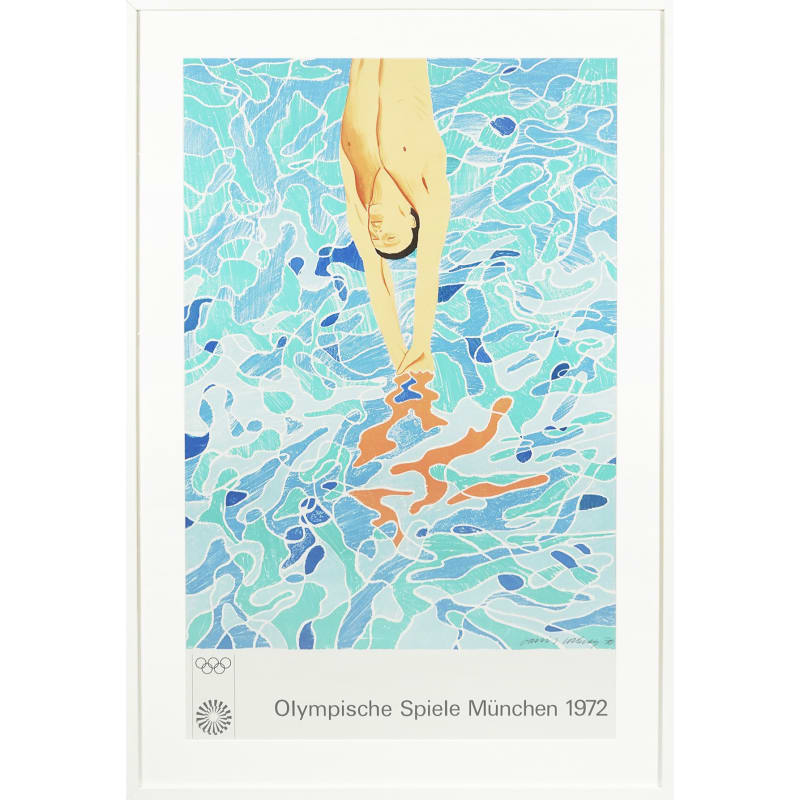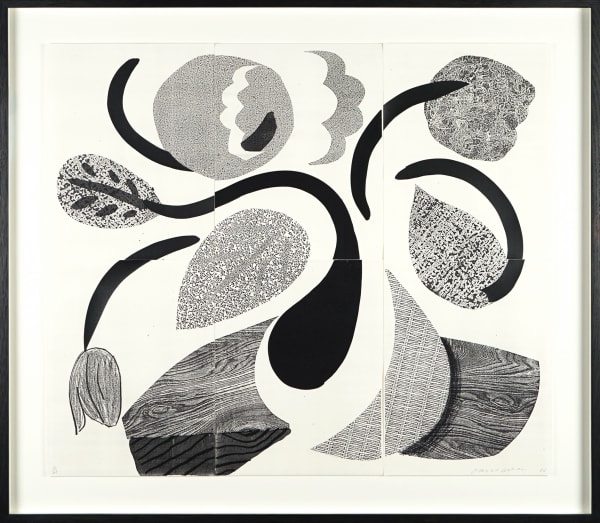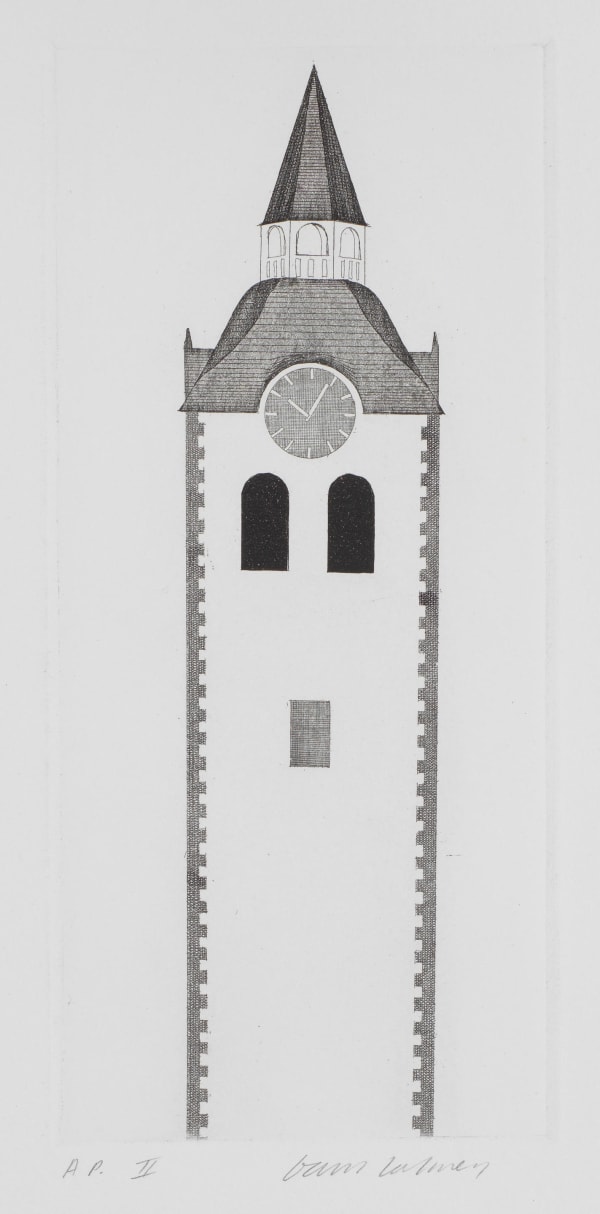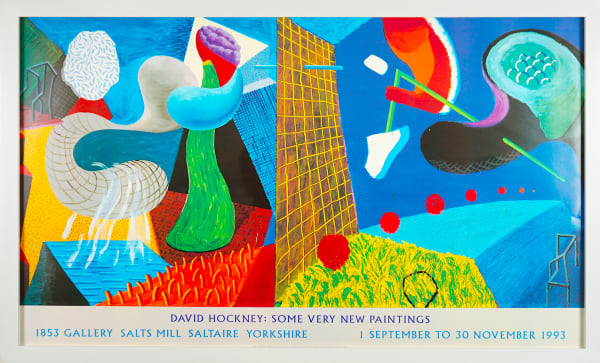Original David Hockney Prints for Sale
"I can look at the little puddles in the rain and get pleasure out of them... if it's rainy I'll draw the rain, if it's sunny I'll draw the sun... The world is very, very beautiful if you look at it, but most people don't look very much."
Unquestionably one of the most important artists of the 20th and 21st centuries, Hockney has blazed an eight-decade career as a painter, draughtsman, printmaker, stage designer, and photographer. He has been the subject of over four hundred solo exhibitions, with the blockbuster retrospective David Hockney 25 currently on display at the Fondation Louis Vuitton.
Hockney’s love affair with printmaking is a microcosm of the curiosity and innovation that have defined his wider career. Studying at the Royal College between 1959 and 1961, his passion was initially sparked by financial necessity. He had run low on painting supplies, and the print department provided materials free of charge. From these beginnings, Hockney would go on to master multiple printmaking techniques, producing some of the defining graphic work of the era.
Etching remained the focus of Hockney's earliest years as a printmaker. A Rake's Progress (1961-63) played on the narrative of William Hogarth's 18th century morality series to depict his own developing identity as a young gay man in the United States. This was followed in 1967 by Illustrations for Fourteen Poems by C. P. Cavafy, a suite of thirteen etchings that vividly demonstrated Hockney's astonishing skills as a draughtsman. Illustrations for Six Fairy Tales from the Brothers Grimm (1969) offered a dazzling interpretation of a literary classic. During the mid-60s to late 1970s, Hockney collaborated extensively with master printer Maurice Payne, but he also worked with Picasso's former printer Aldo Crommelynck, exploring an innovative colour etching technique that resulted in the acclaimed Blue Guitar etchings in 1977.
Hockney's work in lithography is amongst the finest and most ambitious produced by any contemporary artist. His first documented prints (produced when he was still in his teens) were lithographs, but he did not begin to fully engage with the medium until the mid-1960s, when he published A Hollywood Collection (1965). This tremendously witty portfolio of six images aimed to create a ready-made collection for the conoisseur, featuring an abstract, a nude, landscapes and a still-life. Hockney produced this series at the Gemini studio with master printer Ken Tyler, initiating a fruitful working relationship that would result in an astonishing body of lithographs over the following decades. Between 1970 and 1980 they would produce a dazzling array of images that included some of Hockney's most acclaimed images of swimming pools and intmate portraits of close friends. Moving into the 1980s, Hockney's Moving Focus series was a tour de force of colour, perspective and visual ingenuity.
In 1986, Hockney embraced the potential of the photocopier and set about using it to make art. Whereas the aforementioned methods of printmaking required painstaking accuracy and a team of technological experts, the copy machine granted Hockney total artistic freedom. The medium promoted individuality (there was, quite literally, no room for another's input) and spontaneity, whilst remaining true to the tradition of layering ink for depth and dimension. These works were the antecedents of the iPad drawings that have redefined the possibilities of graphic art in the 21st century.
-
 Dancing Flowers, May 1986, 1986£ 26,000.00View more details
Dancing Flowers, May 1986, 1986£ 26,000.00View more details -
 Pool Made with Paper and Blue Ink for Book (Paper Pools), 1980£ 19,750.00View more details
Pool Made with Paper and Blue Ink for Book (Paper Pools), 1980£ 19,750.00View more details -
 Gregory Reclining, 1976£ 12,950.00View more details
Gregory Reclining, 1976£ 12,950.00View more details -
 The Church Tower and The Clock, from 'Illustrations for Six Fairy Tales from the Brothers Grimm', 1969£ 12,000.00View more details
The Church Tower and The Clock, from 'Illustrations for Six Fairy Tales from the Brothers Grimm', 1969£ 12,000.00View more details -
 Olympische Spiele München 1972, 1970£ 2,950.00View more details
Olympische Spiele München 1972, 1970£ 2,950.00View more details -
 1853 Gallery - Some Very New Paintings, 1993£ 2,250.00View more details
1853 Gallery - Some Very New Paintings, 1993£ 2,250.00View more details







